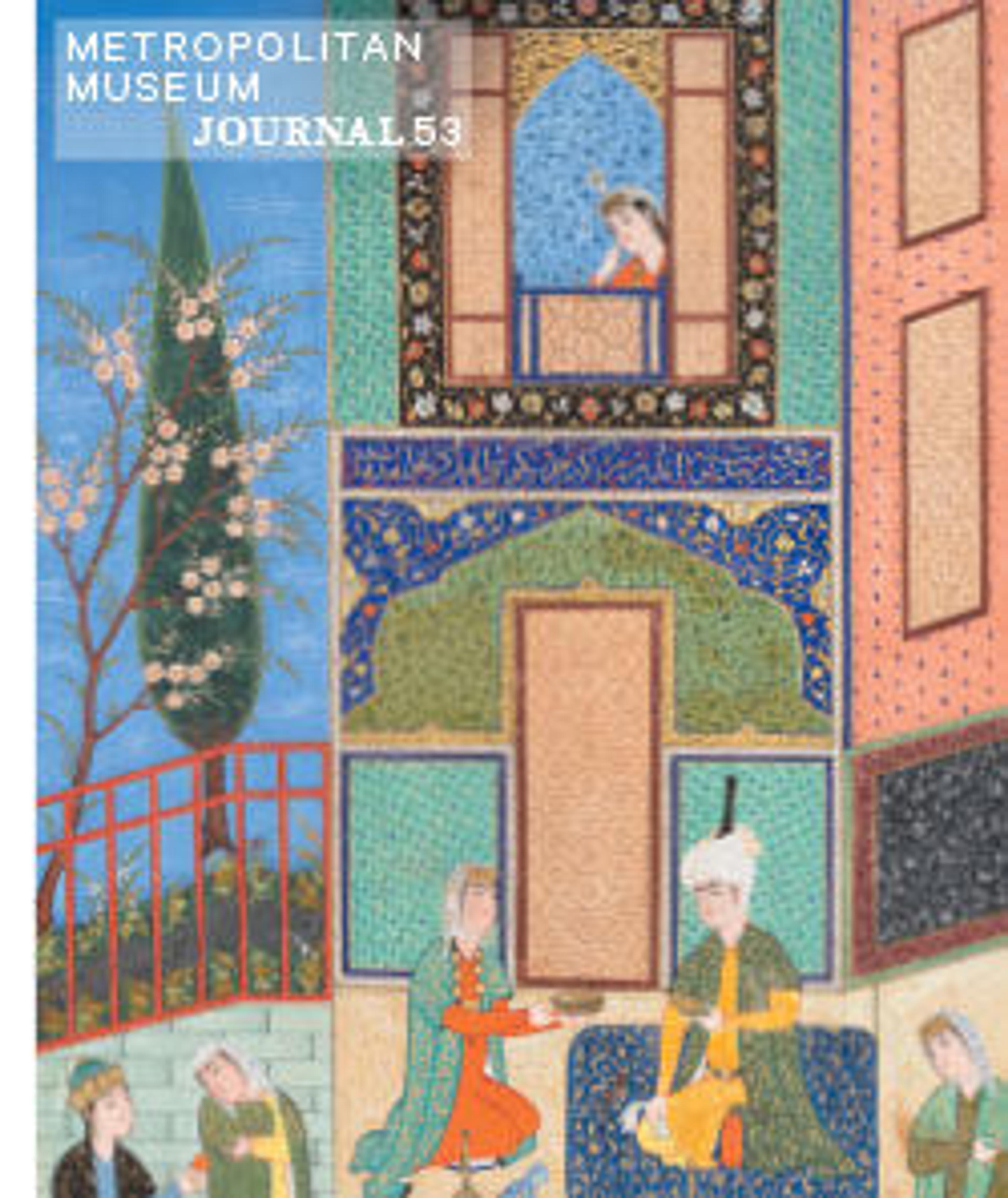"Nushirvan Greets the Khaqan's Daughter", Folio 633v from the Shahnama (Book of Kings) of Shah Tahmasp
When the Khaqan of Chin became aware of the greatness and power of the Iranian shah, he determined to form an alliance and offered one of his daughters in marriage to cement it. Nushirvan accepted the offer, but sent a wise envoy to choose the best of the Khaqan’s five daughters. Four were descended from slaves, while the mother of the fifth was a princess. This daughter was the Khaqan’s favorite and he did not wish to lose her. Despite the attempt by the girl’s mother to dress her poorly, her superior breeding and beauty were obvious and soon she left for Iran, where Nushirvan was overcome with astonishment at her loveliness. The distinctive style of Dust Muhammad, a second-generation Shahnama artist, is evident in the elongated silhouettes of the figures and the flattened profile of the servant in the foreground.
Artwork Details
- Title: "Nushirvan Greets the Khaqan's Daughter", Folio 633v from the Shahnama (Book of Kings) of Shah Tahmasp
- Author: Abu'l Qasim Firdausi (Iranian, Paj ca. 940/41–1020 Tus)
- Artist: Painting attributed to Dust Muhammad (Iranian, Herat late 1400s–1560s Qazvin)
- Date: ca. 1530–35
- Geography: Made in Iran, Tabriz
- Medium: Opaque watercolor, ink, silver, and gold on paper
- Dimensions: Painting:
H. 7 3/8 in. (18.7 cm)
W. 7 in. (17.8 cm)
Entire Page:
H. 18 5/8 in. (47.3 cm)
W. 12 7/16 in. (31.6 cm) - Classification: Codices
- Credit Line: Gift of Arthur A. Houghton Jr., 1970
- Object Number: 1970.301.70
- Curatorial Department: Islamic Art
More Artwork
Research Resources
The Met provides unparalleled resources for research and welcomes an international community of students and scholars. The Met's Open Access API is where creators and researchers can connect to the The Met collection. Open Access data and public domain images are available for unrestricted commercial and noncommercial use without permission or fee.
To request images under copyright and other restrictions, please use this Image Request form.
Feedback
We continue to research and examine historical and cultural context for objects in The Met collection. If you have comments or questions about this object record, please contact us using the form below. The Museum looks forward to receiving your comments.
